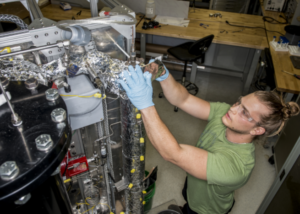
An innovative new program promotes job creation and collaboration in Appalachia
Ambitious Energy: Local organization works to promote energy efficiency and energy education
by Samantha Nelson
Upgrade Athens County is a nonprofit organization and an energy efficiency movement competing for the Georgetown University Energy Prize competition. This two-year-long competition, which ends Dec. 31, 2016, brings communities together from across the United States to increase energy efficiency, and the community that reduces the most energy consumption will win $5 million.
Upgrade Athens County’s mission is to engage Appalachian citizens and spread energy efficiency awareness and improve the region’s long-term economic and environmental sustainability. The organization, which will continue to exist after the competition ends, has expanded its project reach in the hopes of reducing energy consumption and increasing energy efficiency statewide.
Projects include:
Free renewable energy site assessments through the United States Department of
Agriculture’s Renewable Energy for America Program (REAP) Energy Audit and
Renewable Energy Development Assistance Program (EA/REDA). The program is accessible to small businesses and agricultural producers in Athens, Gallia, Hocking,
Meigs, Morgan, Perry, Vinton and Washington counties.
The Better Buildings Initiative, which encourages commercial, public, industrial and residential buildings to be 20 percent more energy efficient over the next decade and greatly reduce spending costs on energy.
Collaborating with the Ohio University Credit Union to help finance car shoppers who purchase a zero-emission electric vehicle.
Solar energy workshops and tours of homes and businesses that use solar energy.
The Rental Efficiency Initiative, which provides information to renters and landlords on how to improve energy efficiency in rental properties through the Smart Renter email campaign, LED light bulb distribution and a landlord engagement campaign.
The Energy Education Fund, which provides financial support to organizations that either want to start or improve their energy efficient educational programs for K-12 students.
SEO
Related posts
What’s Inside
- Behind the Bite (68)
- Features (124)
- In Your Neighborhood (102)
- Photo Essay (4)
- Read the Full Issue (8)
- Talking Points (48)
- The Scene (15)
- Uncategorized (3)
- Web Exclusive (5)
- What's Your Story? (21)

Find us on Social Media